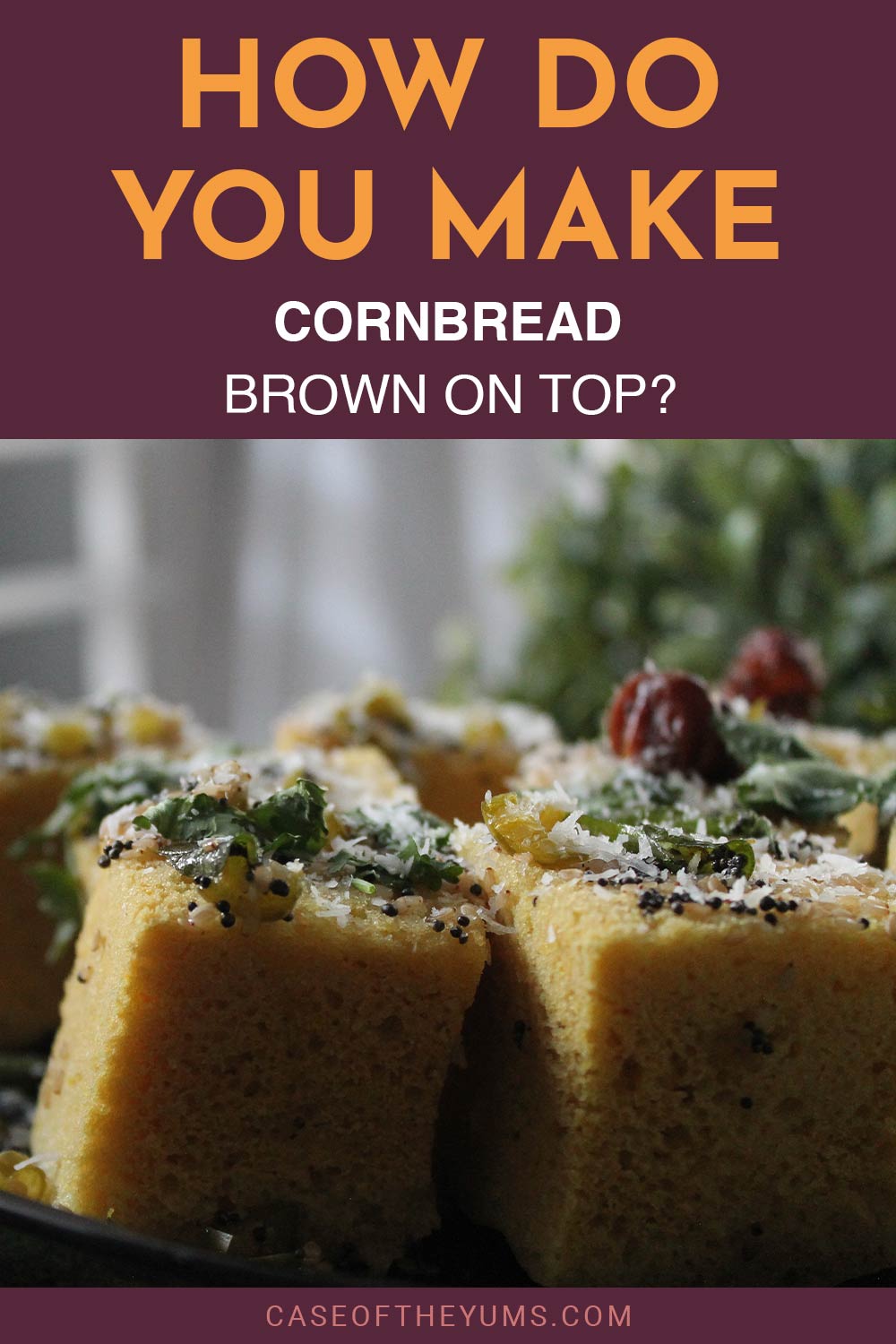How Do You Make Cornbread Brown On Top?
We may earn commissions for purchases made through links on our site. Learn more on our about us page.
Have you enjoyed the delicious cornbread that was browned on the top? It tastes good, right? But maybe you’ve always wondered how it got to that perfection.
With cornbread, getting that golden brown top takes skill while it is soft and fluffy inside. Read on to learn the different ways that can help brown your cornbread!

Should You Turn Up the Heat in the Oven?
Browning cornbread is a difficult task. You want it to be browned and crispy, but you don’t want to burn it. So should you turn up the heat in your oven to try to speed up the process?
Yes! But only slightly. You know how when you’re cooking something like chicken or steak, and you turn up the heat too much, and then it burns on the outside before it’s cooked all the way through? That’s what we’re trying to avoid with browning cornbread.
The trick is to put your pan in the oven at a lower temperature than usual, then turn up that temperature just enough so it’ll get crispy without burning.
If you’ve never tried this before and are feeling nervous about getting it wrong, don’t worry! It’s really easy. Just follow these steps:
- Preheat your oven to 350 degrees Fahrenheit (or whatever temp works for you). Then bake for 20 minutes without opening the door at all (this will help ensure even baking).
- After 20 minutes have passed, check on your cornbread. If it isn’t browned yet (and probably won’t be), turn up the heat by 25 (375 degrees Fahrenheit) degrees and bake for another 10 minutes until browned.
Does Moving the Rack Higher Help?
Moving the rack higher up in the oven may help it brown better. This is because there is direct heat coming from the burners. This is especially helpful if your oven is running on electricity, where it may not be as powerful as a gas one.
Should you Cover Cornbread with foil when baking?
Cornbread is a delicious side dish, but when you bake it, should you cover it with foil? The answer is: it depends. Cornbread is made by mixing cornmeal, flour, and baking powder together.
The mixture is then poured into a pan and baked in the oven until browned on top and cooked through.
When baking cornbread, you want to ensure that the edges of your bread don’t get too dark or burn, which can happen if they come into contact with too much heat while baking.
In order to prevent this from happening, some people recommend placing aluminum foil on top of the bread during its final stages of cooking.
Keep in mind that covering your bread may cause it to become soggy or mushy if left in there for too long!
Does Adding an Egg Help?
Adding an egg will help brown the cornbread, but only if you mix in one beaten large egg per cup of cornmeal. Adding more eggs than that, it will just make your batter too wet and sticky (and no one likes sticky).
Should you Soak Cornmeal?
When it comes to soaking your cornmeal, we’re all about being soaked. There are a lot of different opinions on whether you should soak your cornmeal before making your cornbread.
Some people say it helps the cornbread rise better, while others swear by waiting until after it’s baked.
But here at [company name], we like to take a middle-ground approach: we don’t soak our cornmeal before baking, but we do let it sit in warm water for a couple of minutes before baking.
We believe that this method provides the best of both worlds: it will help the cornbread rise better than if you simply added dry ingredients without any soaking at all (and if you’re worried about your recipe not rising enough, just add more flour).
But it won’t make your cornbread soggy and mushy, but instead nice and fluffy, which it should be.
Final Thoughts on How To Make Cornbread Brown On Top
Cornbread is meant to be browned on top. The only problem is that as soon as you take them out of the oven, you see all of those spots where the top didn’t brown.
We hope the advice above will help you achieve the perfect cornbread you’ve been dying for!


